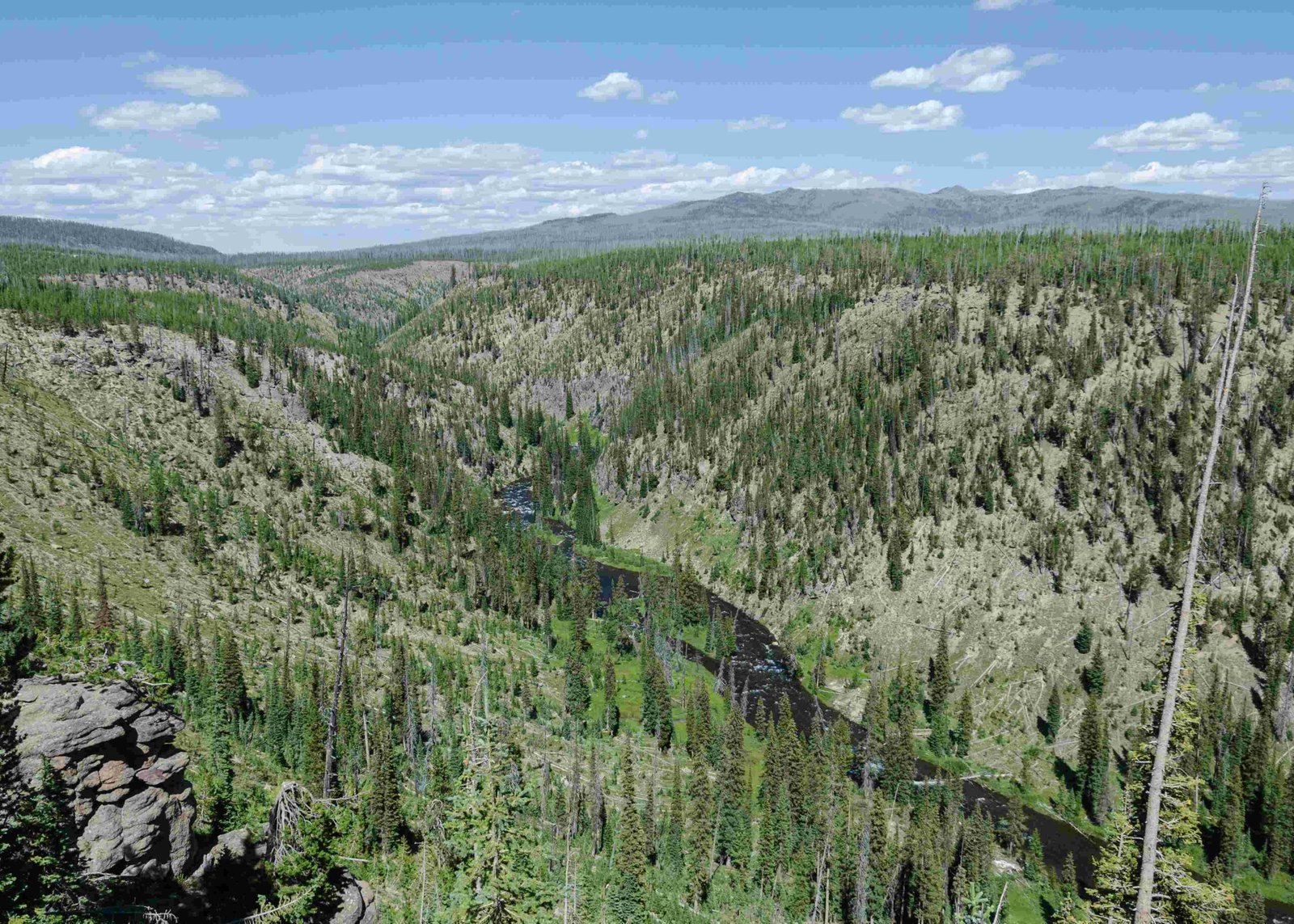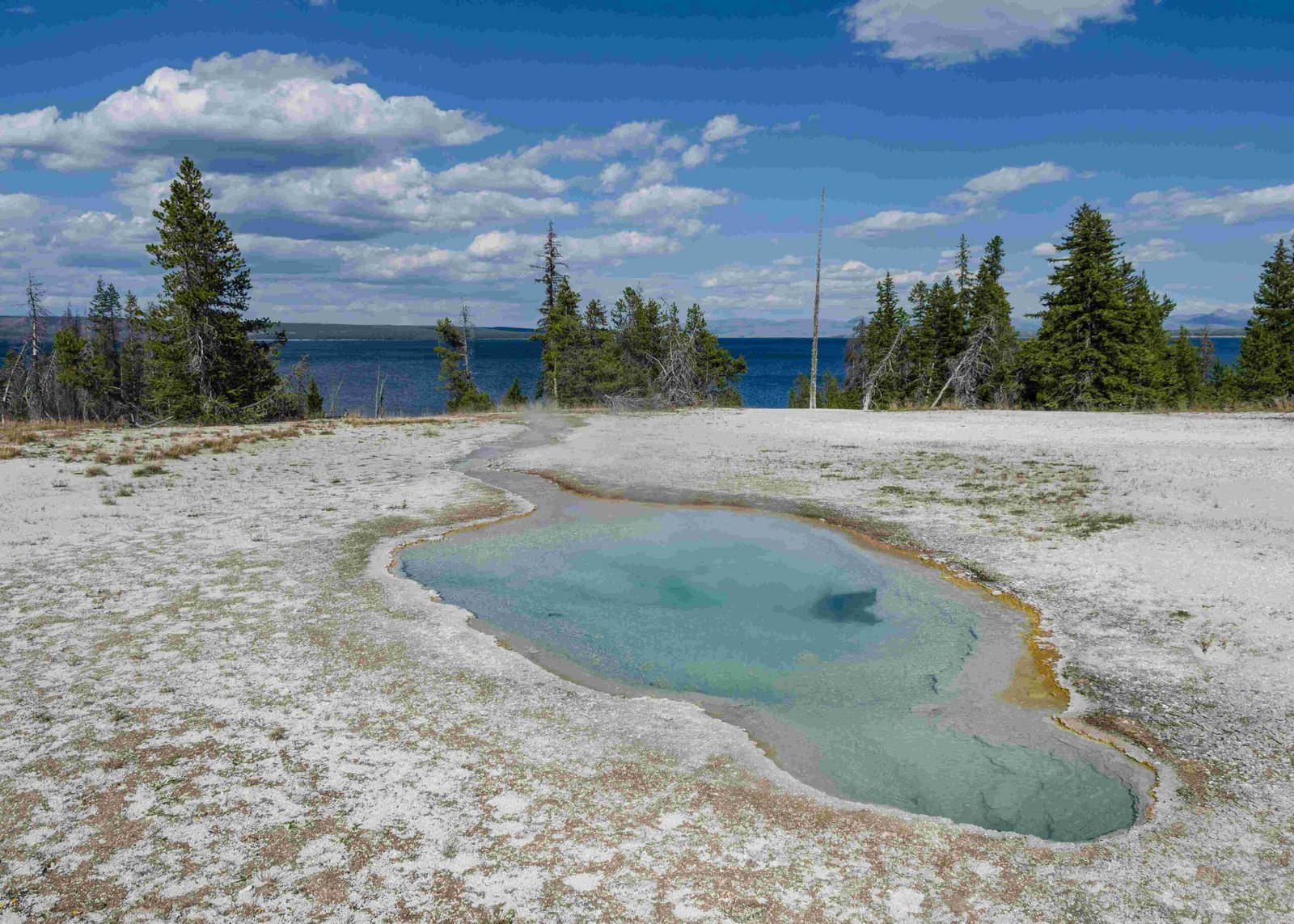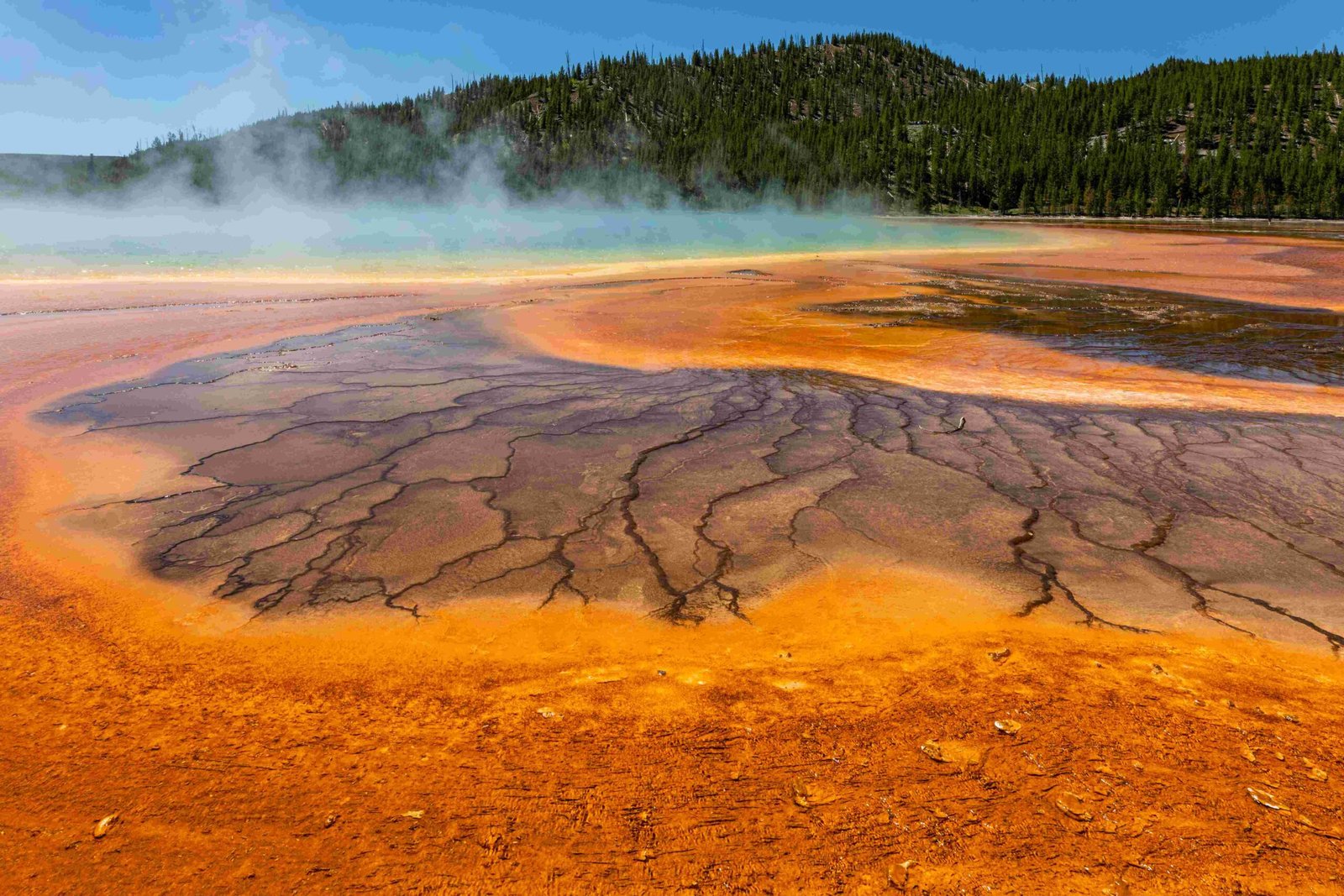Yellowstone National Park is divided into distinct districts, each offering unique features and attractions. From the geothermal wonders of Mammoth Hot Springs to the wildlife-rich Lamar Valley, these districts showcase the park’s diverse landscapes and natural phenomena. Visitors can explore geysers, hot springs, canyons, and abundant wildlife across the park’s vast expanse, with each district providing its own set of amenities and experiences.
What Are the Main Districts of Yellowstone National Park?

Yellowstone National Park is divided into several key districts, each with its own unique characteristics:
- Mammoth Hot Springs
- Norris Geyser Basin
- Midway Geyser Basin
- Upper Geyser Basin (Old Faithful Area)
- West Thumb
- Grant Village
- Bridge Bay
- Lake Village
- Fishing Bridge
- Canyon Village
- Lamar Valley
- Hayden Valley
- Thorofare Valley
Let’s explore each of these districts in detail.
What Can You Experience in Mammoth Hot Springs?

Mammoth Hot Springs, located in the northern part of Yellowstone, is known for its ever-changing travertine terraces. This district offers:
- Unique geothermal features
- Historic Fort Yellowstone
- Albright Visitor Center
- Mammoth Hot Springs Hotel
- Scenic views of the Gallatin Mountains
Visitors can enjoy lodging, dining, and access to information at the visitor center. The area’s limestone formations create a stunning landscape that’s constantly evolving.
Why Is Norris Geyser Basin a Must-Visit?
Norris Geyser Basin, situated in the central part of the park, is Yellowstone’s oldest and hottest thermal area. Key attractions include:
- Steamboat Geyser (world’s tallest active geyser)
- Porcelain Basin
- Back Basin
- Museum and bookstore
The area features boardwalks and trails that allow visitors to safely explore the geothermal wonders. The ever-changing landscape and unpredictable geyser eruptions make this district a fascinating destination.
What Makes Midway Geyser Basin Special?
Midway Geyser Basin, located near Old Faithful, is home to some of Yellowstone’s most impressive thermal features:
- Grand Prismatic Spring (largest hot spring in the park)
- Excelsior Geyser
- Hiking trails to Fairy Falls
The vibrant colors of Grand Prismatic Spring make it one of the most photographed features in Yellowstone. Visitors can explore the area via boardwalks and enjoy stunning views from nearby hiking trails.
How Does the Old Faithful Area Differ from Other Districts?
The Upper Geyser Basin, commonly known as the Old Faithful Area, is one of the most popular districts in Yellowstone. It offers:
- Over 150 geysers, including the famous Old Faithful
- Old Faithful Inn (a National Historic Landmark)
- Old Faithful Lodge and Snow Lodge
- Visitor center and gift shop
- Dining options and lodging
This district provides a comprehensive Yellowstone experience, combining natural wonders with historic architecture and modern amenities.
What Unique Features Does West Thumb Offer?
West Thumb, located on the west shore of Yellowstone Lake, is a smaller but no less impressive district:
- Small geyser basin
- Information station
- Access to Yellowstone Lake
- Nearby hiking trails
The combination of geothermal features and the vast Yellowstone Lake creates a unique landscape in this district.
How Does Grant Village Serve as a Southern Hub?
Grant Village, situated in the southern part of Yellowstone, serves as an important hub for visitors:
- Grant Village Campground
- Visitor Center and Lodge
- Access to Yellowstone Lake
- Dining options and gas station
This district provides essential amenities for visitors exploring the southern regions of the park.
What Attractions Can Be Found in Bridge Bay?
Bridge Bay, located on the north shore of Yellowstone Lake, is primarily known for its marina:
- Boat rentals and guided fishing tours
- Access to nearby trails
- Lodging options
This district is perfect for visitors interested in water activities on Yellowstone Lake.
How Does Lake Village Enhance the Yellowstone Experience?
Lake Village, also on the north shore of Yellowstone Lake, offers:
- Shoreline hub with lodging
- Several cafés
- Access to Elephant Back Trail
- Scenic lakeshore views
This district provides a relaxing lakeside experience with easy access to dining and hiking opportunities.
What Makes Fishing Bridge a Unique District?
Fishing Bridge, named after the historic bridge spanning the Yellowstone River, features:
- Fishing Bridge RV Park
- Museum and visitor center
- Access to Yellowstone Lake
- Café and gas station
This district is particularly popular among RV campers and fishing enthusiasts.
Why Is Canyon Village a Must-See Location?
Canyon Village is home to one of Yellowstone’s most iconic features:
- Grand Canyon of the Yellowstone River
- Upper and Lower Falls
- Uncle Tom’s Trail
- Scenic overlooks and walkways
- Lodging, camping, and dining options
The dramatic canyon and waterfalls make this district a photographer’s paradise and a highlight of many visitors’ trips.
How Does Lamar Valley Contribute to Wildlife Viewing?
Lamar Valley, often called America’s Serengeti, is renowned for its wildlife:
- Wide-open valley landscape
- Home to wolves, bison, elk, and bears
- Prime location for wildlife watching
- Limited amenities, focusing on natural experiences
This district offers some of the best wildlife viewing opportunities in North America, particularly for wolf enthusiasts.
What Makes Hayden Valley a Wildlife Hotspot?
Hayden Valley, a former lakebed, is another prime location for wildlife viewing:
- Open valley with abundant wildlife
- Opportunities to see bison, grizzlies, coyotes, and more
- Limited amenities, emphasizing natural experiences
Like Lamar Valley, Hayden Valley is a must-visit for wildlife enthusiasts and photographers.
Why Is Thorofare Valley Considered Yellowstone’s Most Remote Area?
Thorofare Valley, located in the southeastern corner of the park, is known for its remoteness:
- Prime wildlife habitat
- Yellowstone River
- Opportunities for backcountry hiking and camping
- Home to grizzlies, moose, and bald eagles
This district offers a true wilderness experience for those seeking to explore Yellowstone’s backcountry.
How Can Visitors Navigate Between Yellowstone’s Districts?
Yellowstone’s districts are connected by the Grand Loop Road, a figure-eight road system that spans approximately 142 miles. Key points about navigation include:
- Five entrances feed into the Grand Loop Road
- Most major attractions are accessible via paved roads
- Some areas require hiking or special permits
- Road conditions can vary seasonally
- Limited shuttle services are available in some districts
Visitors should check current road conditions and plan their routes in advance, especially during winter months when some roads may be closed.
What Are the Top Attractions Across Yellowstone’s Districts?
While each district has its unique features, some of the top attractions in Yellowstone include:
- Old Faithful Geyser (Upper Geyser Basin)
- Grand Prismatic Spring (Midway Geyser Basin)
- Mammoth Hot Springs Terraces
- Grand Canyon of the Yellowstone (Canyon Village)
- Wildlife viewing in Lamar and Hayden Valleys
- Yellowstone Lake (accessible from multiple districts)
These attractions showcase the diverse natural wonders that make Yellowstone a world-renowned national park.
By exploring Yellowstone’s various districts, visitors can experience the full range of geological, ecological, and scenic wonders that this iconic national park has to offer. From geothermal features to wildlife encounters, each district contributes to the unique tapestry that is Yellowstone National Park.
References:
1. Yellowstone Map & Guide – National Park Service
2. A Quick Overview Map of Yellowstone National Park
3. Places in Yellowstone – National Park Service

